As a poultry enthusiast, I’m always on the hunt for breeds that bring something special to the coop. My journey led me to the Welbar Chicken Breed, a rare utility breed that’s both practical and stunning.
From their autosexing magic to their chocolate-colored eggs, Welbars have won my heart. Let me share why I think they’re a must-have for any backyard flock.
Brief History of Welbar Chickens
The Welbar Chicken Breed was born in the early 1940s in Eastwrey, Devon, thanks to Mr. H R S Humphreys. Inspired by the autosexing craze of the time, he aimed to re-create a breed that combined beauty and function.
With guidance from Professor Reg Punnett at Cambridge, known for the Cream Legbar, Humphreys began his breeding program in 1940.
Humphreys started with intensive crossing of Gold Duckwing Welsummer and Silver Duckwing Welsummer roosters with Barred Plymouth Rock hens. By 1941, the first chicks were hatched, and cockerels from this mating were bred back to Welsummer hens.
This genetic cross led to the Gold Welbars and Silver Welbars, recognized by the Poultry Club of Great Britain in 1948. Despite their brilliance, Welbars remain a rare breed, with small numbers in the US and UK.
The Welbar joined other autosexing breeds like Rhodebars and Legbars, developed during World War II to support poultry farming.
The Autosexing Breeds Association, formed in 1943, highlighted their commercial value, though interest waned by the 1980s as commercial hybrids took over. Today, conservation efforts keep Welbars alive, as noted on Harislau Birds.
| Awesome fact to know!
Welbar chickens are an auto-sexing breed. You can easily tell the difference between male and female chicks on day 1. Males appear yellow and females have dark stripes. |
Physical Characteristics of Welbar Chicken
Welbars are large fowl with an upright carriage and an active bird demeanor. They boast well-built bodies, broad, long backs, and full, round breasts.
Their single comb is medium-sized and firm, complemented by a smooth face, small earlobes, and a short, deep beak. The plumage is silky, with a long, slender neck and abundant hackles.
The Gold Welbar dazzles with gold coloring, black barring on wings and tail, and black ticking on the hackle. Males have a black breast with gold barring, while females sport a salmon breast and black striping on the head and hackle.
Silver Welbars are predominantly silver, with black ticking and black barring on wings and tail. Females have a salmon breast, and males show silver mottling. These feather patterns give Welbars a classic pheasant look, rivaling the Bielefelder resemblance but with darker eggs.
The autosexing feature is a standout. Day-old chicks are clearly sexable: female chicks resemble Welsummer pullets with body stripes, while male chicks are lighter, with faded stripes or no stripes and a white headspot. This sex-linked trait, inherited from Barred Plymouth Rock, simplifies chick sexing and flock management.
Silver Welbar & Gold Welbar
Silver Welbar Chickens are mostly silver, with black ticking on the hackle and black barring on the wings and tail. Their breasts are black with silver spots.
The female silver welbar chicken is characterized by a salmon-colored breast, a hackle embellished with black barring, slightly barred wings, and a dark gray tail.
Gold Welbar Chicken is mostly gold, but the male has black ticking on the hackle and black barring on the wings and tail. Their breasts are black with gold barring. The female gold welbar chicken is distinguished by black striping, barred with white, on her head and hackle.
She features a salmon-colored breast, while her wings and back are grayish-barred. The tail of the Gold Welbar is brownish gray and exhibits light barring.
Welbar Chicken Temperament
Welbars have a calm temperament, making it docile and friendly. I’ve found them to be chill, even the roosters, which is rare. They’re not aggressive and suit backyard pets, especially for families.
Their temperament is ideal for free-range setups, as they’re opportunist foragers with high awareness of predators.
In a flock, Welbars often rank low in the pecking order, especially without a lead hen. They’re fearful of dominant breeds like Rhode Island Red or Barnevelder, so monitor chicken behavior to prevent bullying.
Their soft, feather-light breed nature makes them less confrontational, fostering a harmonious flock dynamic.
Welbars thrive in backyard chicken settings due to their poultry traits. They’re active birds but tolerate confinement well. Their moderate broodiness means they’re less likely to disrupt egg production, and their quiet crow keeps neighbors happy.
Welbar Chicken Egg Production
Welbars are good egg layers, producing large eggs with dark brown eggshell color, often described as chocolate eggs or terracotta eggs with a matt finish.
The depth of color is inherited from their Welsummer heritage, making them a favorite for egg labeling and egg pic enthusiasts. Compared to Copper Marans or Bielefelders, Welbars offer a discernable difference in egg color depth.
A well-cared-for Welbar hen lays 200 to 250 eggs annually, starting at 5 to 6 months as a pullet. Their laying frequency is consistent, even in summer and winter, ensuring high egg productivity. This makes them ideal for self-sufficient households seeking egg production without intensive farming.
Here’s how Welbars stack up against other breeds:
|
Breed |
Egg Color |
Annual Eggs |
Egg Size |
|---|---|---|---|
|
Welbar |
Dark brown |
200–250 |
Large |
|
Welsummer |
Light brown |
160–200 |
Medium |
|
Copper Marans |
Very dark brown |
150–200 |
Large |
|
Bielefelder |
Brown |
200–230 |
Large |
Welbar’s huge eggs and egg-laying capacity make them a top choice for layer chickens.
Welbar chickens have moderate broodiness. Broodiness refers to the inclination of chickens (hens) to sit on eggs and hatch them.
They are typically known for their reliable egg-laying ability, rather than for their broodiness.
Breeding Welbar Chickens
The autosexing mechanism is a highlight. Chick down color reveals sex: female chicks have dark stripes, while male chicks show a white dot on the head and faded stripes.
This sexual dimorphism simplifies breeding and hatching, reducing culling needs. Professor Punnett’s work on sex linkage explains the genetic selection behind this.
Choose breeding stock with breed standard traits, like crisp pattern and egg color. High-quality Welsummers and heritage BR stock ensure hybrid vigor.
Avoid inbreeding by introducing outcross or backcross with pure Welsummers. Track weight (hens at 6 lbs, cocks at 7.5 lbs) and use leg bands or color zip ties for alphanumeric identifier to separate for breeding.
Breed recreation is complex due to variations in feather coloration and barring. Culling for size or culling for temperament is necessary to maintain breed characteristics.
Hatcheries like Hoover’s Hatchery offer hatching eggs, but proprietary breeding programs may limit access. Interbreeding with Partridge Welsummers or Bielefelders can dilute silver dominance.
Difference Between Welbar and Welsummer
Here’s how Welbar and Welsummer chickens differ:
Welbar was developed in Britain by crossing Welsummer with Barred Plymouth Rock, while Welsummer originates from the Netherlands.
And as we know, Welbar chickens are autosexing, meaning you can tell the sex of chicks at hatch by their color, unlike Welsummer chickens.
Welbar has a unique crele pattern due to barring, while Welsummer has a distinct plumage.
Both lay dark brown eggs, but Welsummer eggs are often richer in color. Welbar typically lays 160-200 eggs per year, more than Welsummer’s 80-160.
How to Care for Welbar Chicken?
Caring for Welbar chickens is an important responsibility that ensures their health, happiness, and overall well-being.
With these simple steps, you can provide the best care:
Housing:
- Provide a spacious and secure coop with proper ventilation.
- Provide 4 square feet per bird in the coop and 10 square feet in the run
- Ensure protection from predators and harsh weather conditions with the best heater.
- Provide clean bedding/flooring, such as straw or wood shavings, for their comfort.
Feeding:
- Offer a balanced diet of high-quality chicken feed, grains, and fresh vegetables.
- Make sure they have access to clean water at all times.
- Offer treats like fruits and grains sparingly.
- Provide appropriate feeders and waterers to prevent waste and contamination.
Hygiene and Health:
- Keep the coop clean by regularly removing droppings and replacing bedding.
- Check their health and behavior for any signs of illness or distress.
- Consult a veterinarian for regular check-ups and vaccinations.
Egg Handling:
- Collect eggs daily and store them properly in a cool and dry place.
- Clean dirty eggs gently with a damp cloth, if necessary.
- Ensure a comfortable nesting area for them to lay their eggs.
Enrichment:
- Allow your Welbar chickens to roam in a secure, fenced area to encourage natural behavior.
- Provide perches, dust baths, and toys for mental and physical stimulation.
Welbar Chicken Images
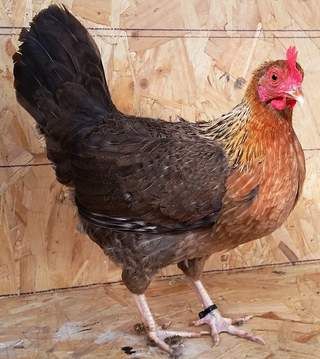

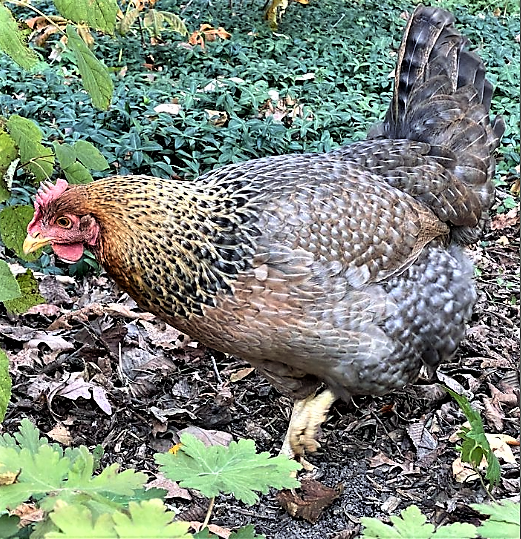
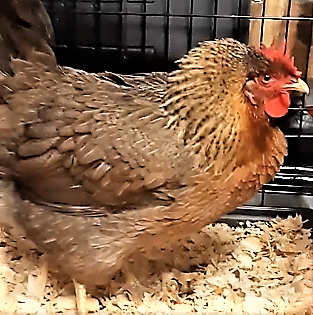
Summary
Welbar chickens are known for their aesthetic appearance, hardiness, egg-laying ability, and friendly, docile nature.
They are rarely broody, but their egg-laying rate is good enough. A balanced diet and good health care will boost their productivity and longevity.
Welbars are readily available through hatcheries like TSC/Hoover Hatchery (Douglas Feed) in the US and small farmers in the UK. Florida and Scotland have active breeders, and the Autosexing Breeds Association connects enthusiasts.
Have you ever raised a Welbar chicken? If so, feel free to share your thoughts in the comments; we would love to help you.
FAQs
What color eggs do Welbar chickens lay?
Welbar chickens are known to lay dark brown eggs, with multiple reliable sources confirming this color, making them a great choice for those wanting richly colored eggs.
What makes a Welbar chicken?
A Welbar chicken is a breed created by crossing Welsummer and Barred Plymouth Rock chickens. It’s known for: Being autosexing, allowing sex identification at hatch. Having distinctive crele feather color. Laying dark brown eggs. Exhibiting a friendly and calm temperament.
Are Welbar chickens friendly?
Yes, Welbar chickens are considered friendly and calm, making them ideal for backyard flocks and as pets, based on reports from chicken keepers.
What is the Welbar Chicken Breed?
A hybrid chicken from Welsummer and Barred Plymouth Rock, known for autosexing and dark brown eggs.
How does autosexing work in Welbars?
Male chicks have a white headspot and faded stripes, while female chicks have dark stripes, making chick sexing easy.
Where can I find Welbars?
Check TSC/Hoover Hatchery or BackYardChickens.com for breeders in the US and UK.
What is the Lifespan of Welbar Chicken?
A well-cared welbar chicken can live between 6-8 years.
Are Welbar chickens autosexing?
Yes. They are autosexing birds (exhibiting different characters in the two sexes at birth or hatching).
Are welbar chicken roosters aggressive?
Roosters are known for aggressive personalities as they are the protector of the backyard or flock and their friends.
Are Welbar chicken breeds good for beginners?
Yes, the welbar chicken breed is a good choice for beginners or novices, as they don’t want any special attention all the time.
How many eggs do Welbar chicken hens lay?
On average, welbar hens lay between 200 and 250 eggs per year, which is 16 to 20 eggs per month.

Hello! I’m Ibrahim, the owner and writer of this blog. I run a chicken farm with 160 chickens, and I’ve gained a lot of knowledge about raising and caring for them. Now, I want to share my insights and experiences with you to help you in chicken keeping.

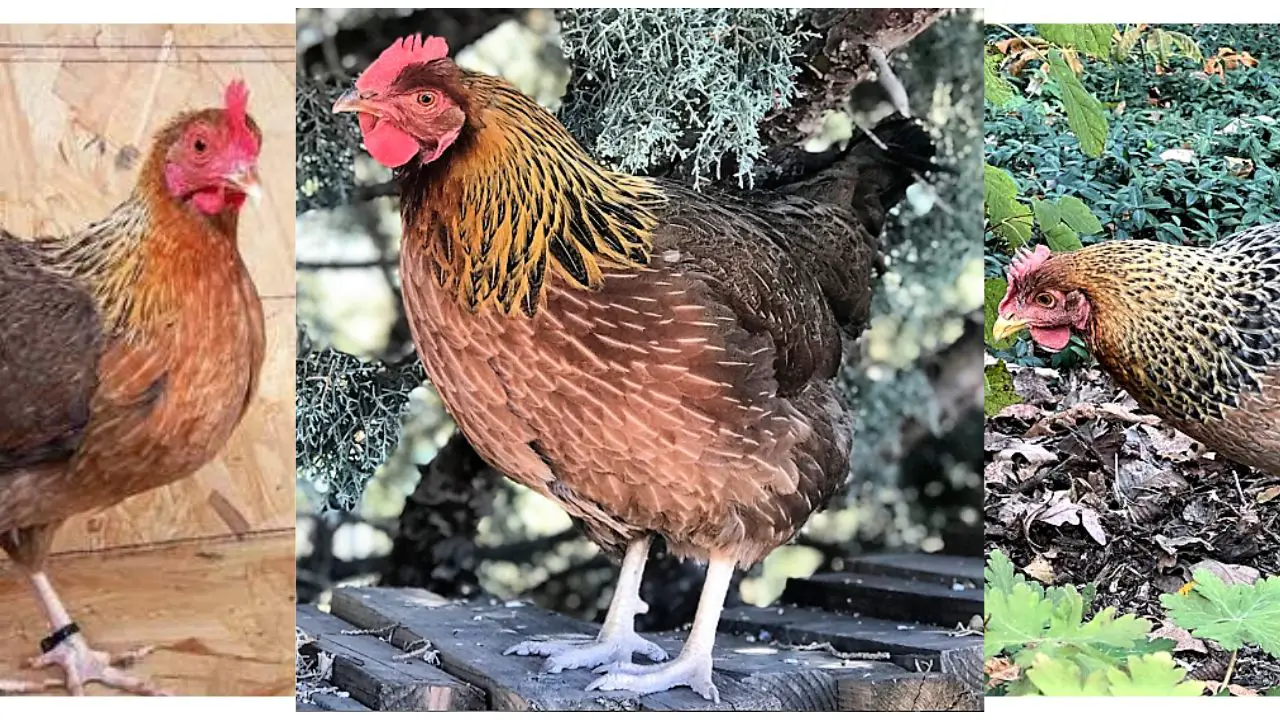

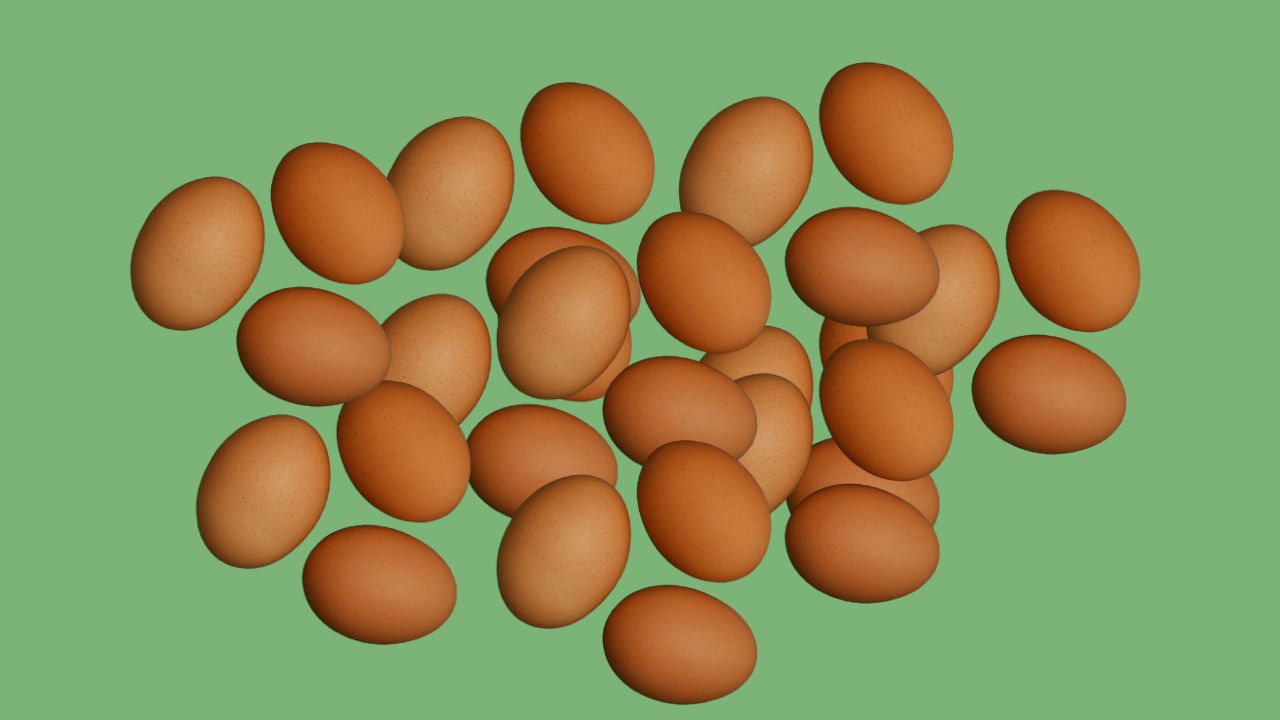
1 thought on “Welbar Chicken Breed | Family-Friendly & AutoSexing”